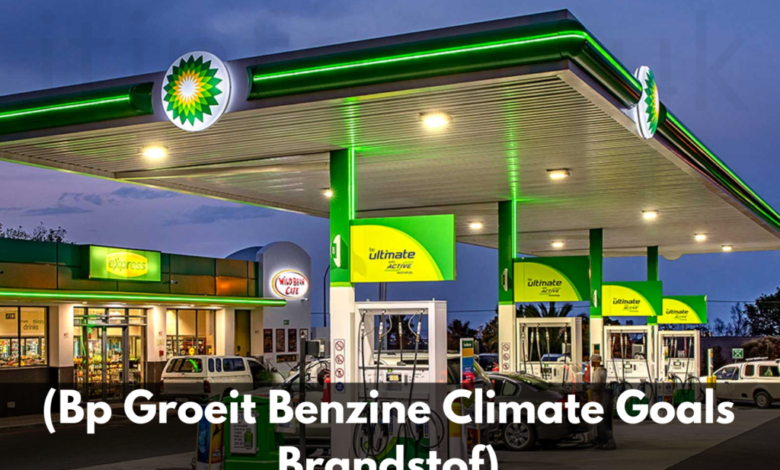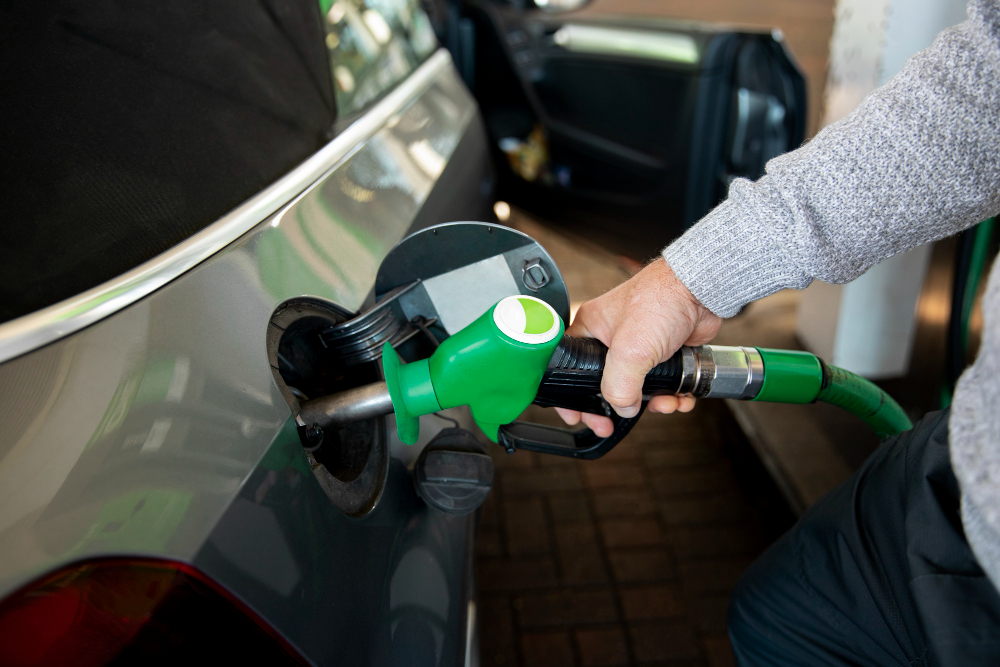BP Groeit, Benzine, Climate Goals, Brandstof: How One Energy Giant Aims to Lead Transition to Sustainable Future

In today’s rapidly changing energy landscape, BP (British Petroleum) stands out as one of the world’s largest and most influential energy companies. Known for its extensive work in oil and gas, BP Groeit, Benzine, Climate Goals, Brandstof has grown from its early beginnings into a global player in both traditional and renewable energy. Its growth has been fueled by innovations in gasoline production, a commitment to, and a focus on sustainable (fuel). This article explores growth journey, the role of gasoline, its ambitious and the company’s innovative approach to the future of fuel.
BP Groeit, Benzine, Climate Goals, Brandstof: The Evolution of a Global Energy Giant
BP Groeit, Benzine, Climate Goals, Brandstof has been monumental over the last century. Established in 1909 as the Anglo-Persian Oil Company originally focused on oil extraction in Iran. The company grew rapidly, capitalizing on the world’s increasing demand for oil and fuel products. Through strategic expansions, mergers, and investments, became a key player in global energy markets.
BP growth was not just limited to oil exploration; it expanded its refining operations, developed an international network of fuel stations, and ventured into alternative energy sources. Today, has operations in over 70 countries, employing tens of thousands of people worldwide. This growth has allowed BP to diversify its portfolio and explore a future beyond oil, with significant investments in sustainable energy sources such as wind, solar, and hydrogen.
The company’s success in the oil sector, particularly through its involvement in (gasoline) production, was a key driver of its growth. However, BP Groeit, Benzine, Climate Goals, Brandstof vision for the future encompasses much more than just traditional fuel. It aims to balance its legacy with a commitment to renewable energy, in line with its ambitious.
The Role of Benzine (Gasoline) in BP Success
For decades, BP Groeit, Benzine, Climate Goals, Brandstof primary source of revenue has been its production and sale of (gasoline). is a crucial component in powering the global economy, driving cars, trucks, and other vehicles around the world. BP’s extensive refining processes have enabled it to produce high-quality at scale, supplying energy to millions of consumers through its fuel stations and distribution networks.
Gasoline remains a central part of BP Groeit, Benzine, Climate Goals, Brandstof product offering, though the company acknowledges that the future will likely see a decline in the demand for traditional fuel as electric vehicles (EVs) and alternative fuels gain popularity. Nevertheless,has played an essential role in BP’s growth, providing the company with the financial resources and infrastructure to explore new energy ventures.
BP’s innovation in fuel technology has also improved the efficiency and environmental impact of gasoline. For example, the company has invested in cleaner refining processes and the development of lower-emission fuels. These advancements help reduce the environmental footprint of traditional fuel consumption while BP continues to work on its broader climate objectives.
BP Ambitious Climate Goals
As one of the world’s largest oil and gas companies, BP Groeit, Benzine, Climate Goals, Brandstof has a significant responsibility to address the environmental impact of its operations. The company has set ambitious aimed at reducing its carbon footprint and contributing to global efforts to combat climate change.
BP’s most significant commitment is its pledge to become a Net Zero company by 2050. This means that aims to reduce its carbon emissions from both its operations (Scope 1 and 2 emissions) and the products it sells (Scope 3 emissions) to effectively zero. Achieving this goal will require transformative changes across the company, from reducing the carbon intensity of its products to investing heavily in renewable energy sources.
Key elements of BP’s climate strategy include:
- Cutting Emissions: BP has committed to cutting the carbon intensity of its products by 15-20% by 2030 and achieving net-zero emissions by 2050. This involves improving energy efficiency, reducing methane emissions from oil and gas production, and transitioning to cleaner fuels.
- Renewable Energy Investments: BP is actively investing in renewable energy sources, such as wind and solar power. By 2030, the company aims to have developed around 50 gigawatts of renewable energy capacity, positioning itself as a leader in the renewable sector.
- Carbon Capture and Storage (CCS): To help meet its is also investing in carbon capture and storage technology. CCS allows the company to capture carbon emissions from industrial processes and store them underground, preventing their release into the atmosphere.
- Hydrogen and Biofuels: BP is exploring new fuels such as hydrogen, which is seen as a key component of a low-carbon future, especially for industries that are difficult to electrify, like shipping and aviation. BP is also expanding its production of biofuels, which are made from organic materials and produce fewer emissions than traditional fossil fuels.
- Electric Vehicle (EV) Infrastructure: Recognizing the shift towards electric vehicles, BP is expanding its EV charging network through its subsidiary, BP Pulse. This initiative includes building fast-charging stations across key markets, helping support the growth of the electric vehicle industry.

Hydrogen: Fuel of the Future
Another key focus for BP Groeit, Benzine, Climate Goals, Brandstof is hydrogen, which is being heralded as a potential game-changer in the energy sector. Hydrogen can be used as a clean fuel for power generation, transportation, and industrial processes, emitting only water vapor when burned.
BP is investing in the development of green hydrogen, which is produced using renewable energy, making it a truly sustainable fuel option. The company is also exploring ways to produce hydrogen at scale to meet the growing demand for clean energy solutions.
Challenges and Opportunities for BP
Efforts to grow its business while transitioning to cleaner fuels present both challenges and opportunities. One of the biggest challenges is balancing the profitability of its traditional gasoline business with the need to invest in cleaner technologies. While gasoline remains a vital revenue stream, BP must continue to push forward with renewable energy investments to stay competitive in the long term.
There are also significant technical and financial hurdles involved in scaling up renewable energy projects like wind, solar, and hydrogen. However, BP Groeit, Benzine, Climate Goals, Brandstof global reach, resources, and expertise provide it with unique advantages as it navigates the transition to a more sustainable future.
On the other hand, the global push towards decarbonization presents vast opportunities for BP. As governments and businesses increase their commitments to reducing emissions, there is growing demand for cleaner energy solutions. BP is well-positioned to capitalize on this trend through its investments in renewable energy, biofuels, hydrogen, and EV infrastructure.
Conclusion
BP Groeit, Benzine, Climate Goals, Brandstof journey from a traditional oil and gas company to a leader in the energy transition reflects the broader shifts in the global energy market. The company’s success in the (gasoline) market has driven its growth for decades, but BP is now setting its sights on a future powered by renewable energy. Its ambitious investments in biofuels, hydrogen, and electric vehicle infrastructure, and commitment to reducing its carbon footprint demonstrate a forward-thinking approach to sustainable energy.
As the world moves towards cleaner fuels, BP’s role in providing sustainable will be critical. While the road ahead presents challenges, history of resilience, innovation, and growth suggests that it will continue to play a key role in shaping the future of energy.





